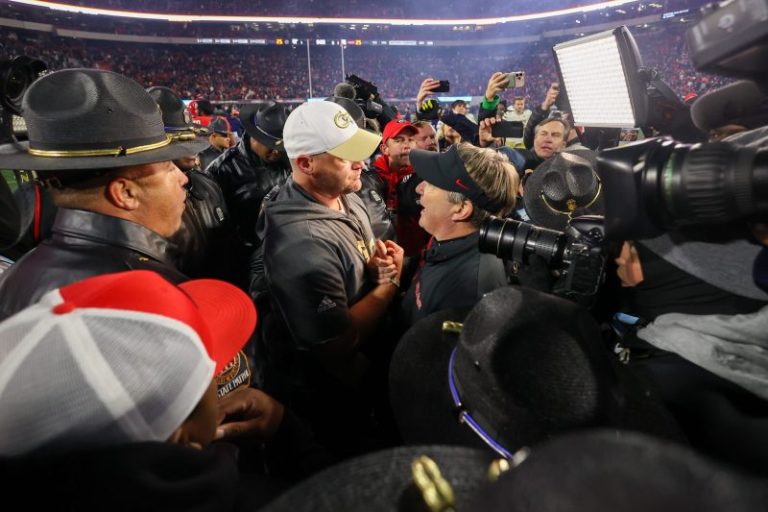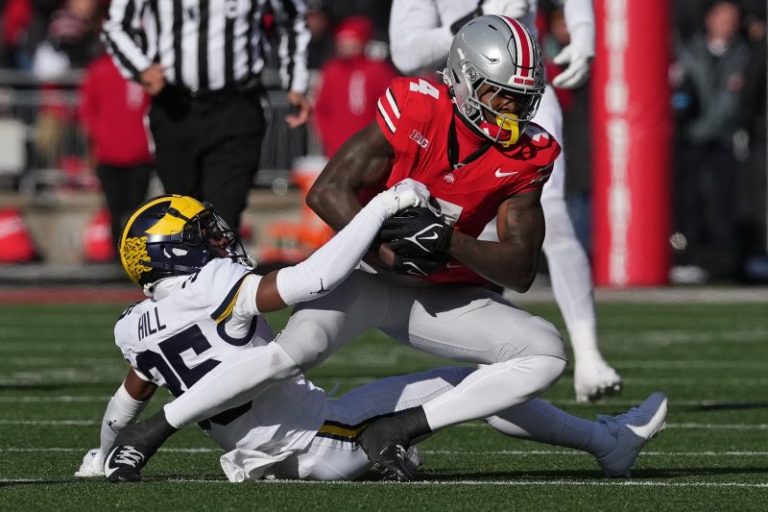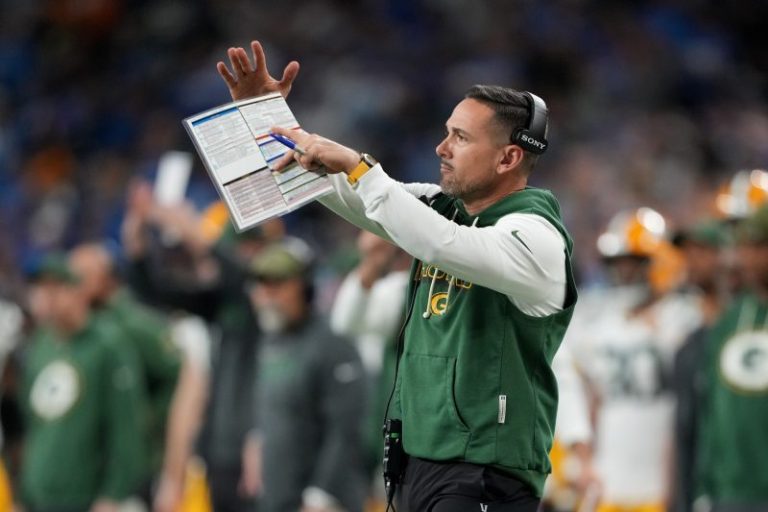Joe Burrow returned from a severe turf toe injury, leading the Bengals to a 32-14 victory over the Ravens.
Despite the win, the Bengals’ record is now 4-8, but they remain hopeful for a late-season playoff push.
The Bengals’ defense, previously a weakness, forced five turnovers and played a crucial role in the upset.
But he didn’t literally eat.
Following the Cincinnati Bengals’ 32-14 upset of the Baltimore Ravens in Burrow’s highly anticipated return, the Pro Bowl quarterback declined to eat the turkey offered during NBC’s postgame interview.
“I didn’t touch it,” he told reporters afterward. “I don’t know who made it, where they made it, I’m good.”
But whether it was carving up the Ravens, not carving up NBC’s mystery meat or deciding to rejoin a team that was 3-8 going into the Baltimore game, it’s evident Burrow knows what he’s doing.
Good thing he doesn’t listen to a certain USA TODAY Sports NFL columnist who thought the prudent thing to do was pack it in for 2025 and regroup for 2026.
From the outside looking in, there seemed to be little reason for Burrow, the Bengals’ best player in a generation, to rush back − and maybe that will still prove to be the case. He’s missed 23 of a possible 95 regular-season starts to date during his six-year career. He’s toiling for a team that’s now 4-8 – the same record it had through 12 games a year ago before ultimately falling short of postseason.
So does one glorious upset in front of a national audience mean this quest isn’t actually quixotic? Not necessarily. But oftentimes, one gains a much better perspective by being up close and personal.
Burrow’s return brings smiles back to Bengals’ locker room
There was Cincinnati left tackle Orlando Brown Jr., looking relieved and exhausted in M&T Bank Stadium’s cramped but joyous visitors’ locker room following the win.
“It’s special, man,” Brown told USA TODAY Sports. “I wouldn’t want it to be under any other circumstances.”
There was head coach Zac Taylor, standing alone in a small room away from players, staff and reporters, appearing spent but satisfied in his first quiet moment after a dominant win, a raucous celebration and his press conference. He made eye contact and offered what might have been his first genuine post-game smile in months.
“I’m really happy. That was kind of the first all-around game we’ve played all season, it felt like,” he’d said just moments earlier.
“Couldn’t be prouder of those guys.”
And there was Burrow, hoarse and barely audible behind a microphone – perhaps even a touch emotional – speaking after a win for the first time since the season opener.
“Certainly, hasn’t been easy on me through six years from a lot of different angles,” he said. “So, I worked really hard to put myself in position to be back out there, and a lot of people around me have done the same. Through a lot of discussion, time in the training room, just a lot that’s gone into this, and I’m proud to be back.
“Putting in work for a long time, and going out and it paying off – there’s just no feeling like going out in front of the world with a group of guys that work really hard to go try and win games.
“Obviously, we have a lot of games left, but we’re going to enjoy this one.”
And why not?
This was the year the Bengals had finally avoided one of their notoriously slow starts, winning their first two games, only to lose Burrow midway through that second victory. Cincinnati went 1-8 without him.
Yet a season that appeared lost may, in fact, be salvageable.
With Pro Bowl talent in place, can Bengals make a playoff run?
If injured wideout Tee Higgins (concussion) and/or defensive end Hendrickson (hip/pelvis) return, the squad will get another instant infusion of Pro Bowl-caliber upgrading. Neither played Thursday, and Hendrickson has played sparingly over the past six weeks.
While the Bengals racked up 32 points Thursday, they also left a lot of meat on that turkey bone – going 1-for-6 in the red zone and settling for six Evan McPherson field goals. They recovered the Ravens’ first turnover, a strip sack of Lamar Jackson, on Baltimore’s 2-yard line, but squandered the gift − gaining nary a yard and accruing no points while going four-and-out. A less-rusty Burrow could have well meant a fifty-burger against a Baltimore D that’s been one of the league’s best over the past six weeks.
“At the end of the day, we have to make plays and put the ball in the end zone,” said Burrow. “We can’t kick six field goals, but that’s the kind of game that it was.
“(I)t was a ‘take your points’ kind of game. Obviously, the one that really hurt us was when we got the turnover down there and came out with no points. Typically, that’s going to be tough to win the game, but we were able to pull it out.”
A Cincinnati defense that’s still the league’s worst in terms of points (31.2) and yards (410.0) allowed per game – by orders of magnitude – was excellent during Burrow’s return, forcing five Baltimore turnovers and limiting the Ravens to little more than 21 minutes with the ball. But look a bit closer, and it’s worth noting the unit – despite consistently being put in bad spots by the Burrow-less offense – has played better lately, holding all three of its opponents since the Week 10 bye to fewer than 400 yards and nearly engineering an upset of the New England Patriots, owners of the league’s best record (10-2), last Sunday.
“The way our defense has played the last several weeks I think has been extremely positive,” said Burrow. “Obviously, they were great, great, great today.”
Of its 10 third downs, Baltimore only converted three.
“(T)he real, real, real, real MVP of the day was the defense. I mean they were unbelievable. They really were,” said Bengals running back Chase Brown, who’d offered candid frustration with the D in recent weeks.
“We are going to win a lot of games here.”
Window to AFC North title remains open
And that could very well be true given the state of the AFC North, a reason Burrow cited for his accelerated return when he rejoined practice earlier this month. The Bengals may be 4-8 – though 3-0 in games started by Burrow – but their 3-1 record in divisional games is the best among AFC North teams. And though Cincinnati is presently two wins back of the Ravens and Pittsburgh Steelers, those teams – and neither exactly appears poised to go on a heater amid their own circumstances – still have to play each other twice, which could bring both of them within striking range if the Bengals can catch fire.
Cincinnati won its final five games last season but came up one victory shy of playoff qualification. Now, it at least seems possible to replicate a similar sprint with their final five games this year against the struggling Buffalo Bills and Ravens (in Cincinnati next time), followed by the Miami Dolphins, Arizona Cardinals and Cleveland Browns, a trio of teams with a combined record of 10-23.
“Unfortunately, we’ve been here before, same record,” said Taylor.
“So, we know what it looks like, and we know what it feels like. We know what the urgency level is. It doesn’t really change how we operate in any way, shape or form because we just keep going on a week-to-week basis and doing our best to find a win. Certainly, we know what this looks like, and I expect our guys to handle it the right way.
“We knew coming in, everything was still in front of us. … We can’t worry about what place we are in or the chances of making the playoffs. Take every game serious and like it is your last. We must treat every game in November, December and January as playoff football.”
Added Burrow’s favorite target, wideout Ja’Marr Chase: “We’ve been in this position before, trying to fight ourselves out of adversity to get ourselves in the playoffs, to get ourselves a better picture in the future, so at the end of the day, we need Joe, and Joe needs us. We have to make it work, someway, somehow, and just get ourselves set for the future.”
And if Burrow, who hit on just of 24 of those 46 throws in his return, gets back to Burrow-level efficiency in the near future, as one would expect? And if his mobility improves, as one would expect? If his rhythm returns with more practice, as one would expect?
“Obviously, I had to knock the rust off in the first half, so I expected myself to play better, but it was good to be out there,” said Burrow, admitting he was “antsy” at times and missing throws he’d typically nail while finding his sea legs.
“The second half, I felt more comfortable. I started putting it where I wanted to.”
Now he just needs to take the Bengals where they want to go – postseason, which they’ve been absent from since losing the 2022 AFC title game. Succeed or fail, it should be quite a ride.
“It’s a lot of fun to watch Joe Burrow play football,” said Taylor. “This is a team that’s been believing all along. It’s never too late to get going. For us to find a win – we’ve got to piggy-back on this. The team’s got a lot of confidence. We’re going to continue to work and continue to fight.”
Taylor went on to underscore his point.
“When you’ve got the guy out there that you wouldn’t trade for anybody, there’s just this different confidence,” said the seventh-year coach. “I don’t say that in any way to slight any other guy because we’ve had a ton of confidence with the quarterbacks that have been playing for us. Joe Burrow – he’s a spectacular player. The team responds the right way to it.”
Memo to you dummies out there: The only idea dumber than eating unvetted turkey? Shutting down Joe Burrow unless or until it’s absolutely necessary.
This post appeared first on USA TODAY










